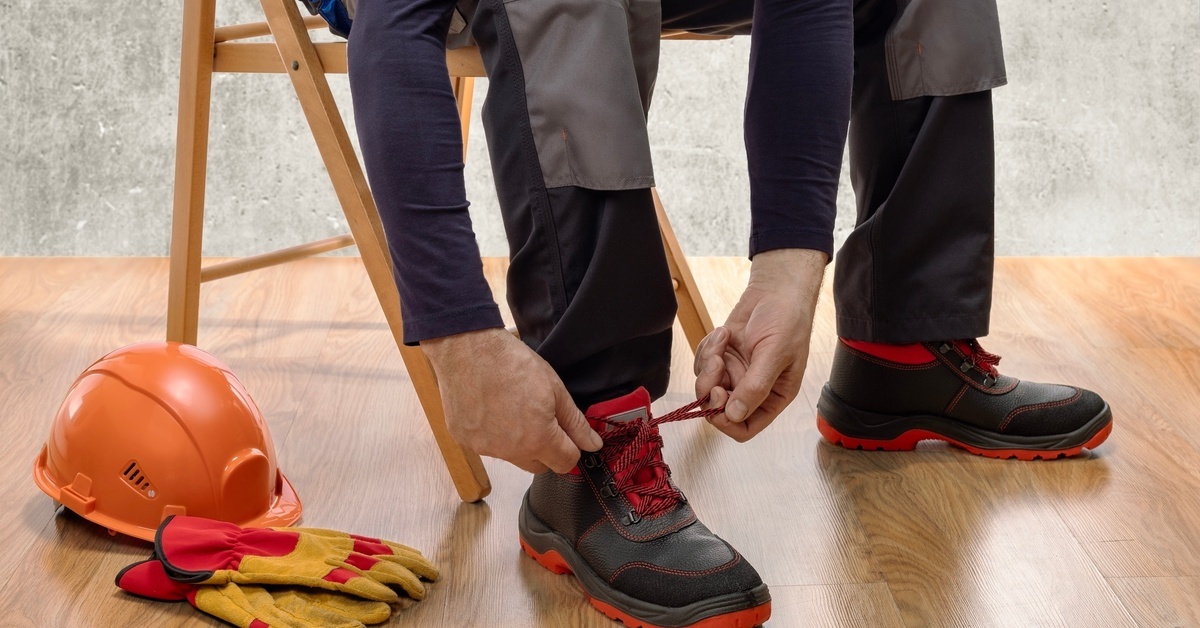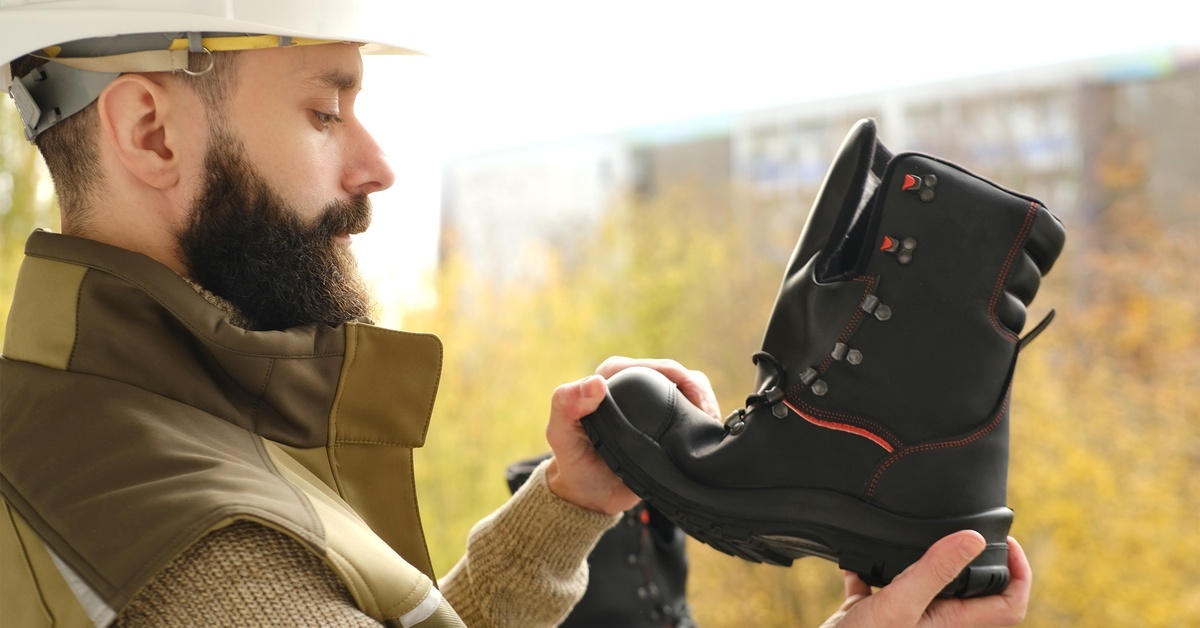Posted by Admin on May 29th 2025
Composite Toe vs. Steel Toe: What’s the Difference?
When working in hazardous conditions, wearing appropriate footwear will save your feet from cramps, bruises, and severe injuries. Construction workers, electricians, and other skilled tradespeople protect their feet using durable composite or steel toe shoes during their long shifts. Discover the difference between composite toe versus steel toe shoes to find out which style suits your work conditions best.
Why Durable Work Shoes Are Essential
It’s always smart to invest in comfortable footwear when you need to stand for hours during your work shifts. While you could wear a soft pair of tennis shoes or layer your insoles with a plush cushion, these shoes can get worn down quickly on the job and fail to protect your feet from heavy or sharp objects that may fall as you work. Steel toe and composite toe boots provide safety and comfort throughout long hours of demanding tasks, and they work especially well for preventing injuries.
Safety Features That Prevent Foot Injuries
Durable work shoes come with reinforced toes to shield feet from impact or compression injuries. Steel toe shoes, for instance, include a metal cap encased within the shoe to guard against falling objects, while composite toe shoes use lightweight materials for similar protection. With the right pair of safety footwear, workers can step confidently knowing that these shoes properly protect their feet against potential hazards.
Built To Endure Harsh Conditions
High-quality leather or synthetic uppers resist water, oil, and abrasion, so many work boots incorporate these materials. When selecting footwear for hazardous jobs, consider how often you deal with rough terrain, severe weather, and heavy-duty materials to pick out the material that will boost your shoes’ longevity.
Balance Between Durability and Comfort
No one wants to stand in uncomfortable shoes. Features such as padded insoles, shock-absorbing soles, and breathable linings minimize cramps and aches, even during extended shifts. Steel toe and composite toe shoes both cater to these needs, though their comfort factors differ depending on the job and environmental conditions.
Types of Jobs That Require Robust Footwear

Certain occupations demand reliable work shoes for safety and practicality. These positions tend to involve heavy labor, structural work, or exposure to risky situations. Recognizing the job’s specific needs can help you determine whether steel toe or composite toe footwear is the better option.
Construction and Industrial Roles
Construction workers, crane operators, and heavy equipment drivers need work shoes that can withstand falling tools, heavy materials, and uneven terrain. Steel toe boots are often the go-to choice in these environments due to their strength against sharp and heavy objects.
Electrical Jobs
Electricians and those in similar technical trades often favor composite toe shoes, which are nonconductive and better suited to environments with electrical hazards. These shoes provide functionality and worker safety while remaining lightweight enough to reduce fatigue across long shifts.
Outdoor Work
Farmers, landscapers, and others who work outdoors rely on waterproof, insulated footwear to combat wet or cold conditions. Both steel toe and composite toe shoes include weatherproofing features, though composite options generally offer better insulation in extremely cold climates.
Strength Comparison of Steel Toe and Composite Toe Shoes
Steel toe shoes offer strength and the ability to handle significant impact, while composite toe options cater to lightweight flexibility without compromising safety. Depending on your role, one type may offer more advantages than the other.
Whether it’s a heavy beam that falls unexpectedly or machinery rolling over your feet, steel toes provide protection thanks to their robust material. However, composite toe shoes can handle moderate levels of impact and compression to offer substantial safety without the added bulk of steel.
Steel toe boots are better suited for jobs with frequent heavy lifting or hazardous equipment, such as in manufacturing plants or industrial warehouses. On the other hand, composite toe shoes work well in environments that prioritize mobility and speed, such as technical installations or service-based settings.
Weight and Comfort Differences
Dragging heavy feet through your workday can be exhausting. The weight and comfort of your footwear can have a major impact on your productivity, so pick a pair of shoes that offer a lightweight feel.
Composite toe shoes are lighter than their steel counterparts because they contain materials such as carbon fiber and Kevlar. Steel toe shoes, on the other hand, feature heavy materials that may be difficult to walk in when doing strenuous work. This makes composite toe shoes ideal for jobs that require consistent movement or where workers frequently climb stairs or scaffolding.
Environmental Factors That Impact Performance
Both composite toe and steel toe shoes perform well under different conditions, but environmental factors can influence their effectiveness. Choosing the right shoe depends on the climate and terrain you’ll encounter.
Performance in Hot and Cold Weather
Steel toe boots are a better choice for hot conditions, as they allow heat to disperse more efficiently than composite options. However, in cold climates, composite toe shoes offer better insulation since they lack the metal components that can conduct and retain cold temperatures.
Water Resistance and Longevity
Composite toe and steel toe shoes can both be waterproof, but the materials used in their construction affect their resistance to exposure. Steel toe footwear often features rugged leather coatings, while composite shoes may use synthetic materials for flexibility. Prolonged exposure to water can cause leather to crack or degrade over time if not properly maintained, while synthetic materials may be more resistant to water and corrosion.
Cost and Durability

While comparing composite toe versus steel toe shoes, you’ll notice that they also differ in their price point. Choose the style that suits your budget, especially if you plan on buying multiple pairs.
Steel toe shoes tend to offer a longer lifespan due to their sturdy materials, which makes them a cost-effective option for hazardous environments. While their upfront price may be higher, their durability often makes the investment worthwhile over time. Although composite toe options might have a slightly shorter lifespan, their lightweight nature and added comfort can result in better overall performance.
No matter which style you choose, these durable work shoes will benefit your strenuous workday and reduce discomfort. After you pick out a durable pair of work boots, make sure to get some comfortable socks. Our online and in-person collection at Yeager’s Sporting Goods & Marina includes socks for sale that will keep your feet comfortable throughout your long workday. Check out our styles and start investing in safe and reliable footwear today.

